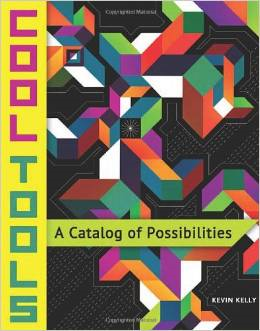For as long as I can remember I’ve enjoyed fixing things. From a young age I had a wealth of opportunity bringing bikes in various stages of disrepair back into use. As I grew so did the scope and scale of my tinkering. I had more curiosity than capability and occasionally courted catastrophe. I ranged over most of the topics covered by books in the town library: engines, cars, electrics, construction, demolition, homemade gunpowder… I’d fix it or make it work better and at times break it entirely.
Kevin Kelly in his recent book Cool Tools (http://kk.org/cooltools/) describes a tool as ‘an opportunity with a handle’. Our household tool-bag back then was meagre and the tools were given many opportunities they never expected. At the time it was called ‘making do’; these days it would be called ‘innovation’.
It was no surprise to those close to me that I became an engineer. Engineering developed skills for making, fixing and improving things: science, maths, logic, problem solving, reliability, safety, project management, usability. I spent much of my career in the software industry where the tools I worked on captured, processed and analysed data to provide insights into customer problems which could be used to improve results. These tools brought together people, the way they work (processes) and technology to fulfil specific business needs.
A dozen years ago I started working in the health system. The clinical information system programmes I’m involved in focuses on enabling care professionals to reliably, effectively and safely support patients to get well, stay well or live a fulfilled life with illness.
The balance of concerns is different from the global software industry, but the essential issues are similar: enabling people to adapt the way they behave and work using updated or innovative tools to gain insights that improve decision making both at the point of care for the individual patient and for the long-term outcomes of communities. An engineering and systems training is useful in finding solutions to these complex real-world healthcare problems. But getting the right balance of people, process and technology in support of reliable, equitable, effective healthcare is challenging.
During a recent system implementation I supported a care team as they started on their first day using a new electronic patient records system. I was training a nurse manager late in her shift and a person she was caring for had a severe reaction to the treatment he was undergoing. The medical equipment provided alarms which helped her focus on the critical issues immediately. I watched her revive the older man and as she touched his cheek gently, I heard her speak calmly and tenderly until he was stable. I stood by as this nurse reacted promptly and effectively. My natural reaction is to step in and fix, but in this situation I could only contribute by getting out of the way and remaining silent. It was a key reminder that the tools my team brings forward need to make it possible for every care professional to work in that person-centred way without fluster and frustration. The tools need to provide the appropriate information at the right time to allow the professional and patient to make the best decision possible. Each of the tools my team deliver are not ‘an opportunity with a handle’ but are ‘an opportunity with a keyboard’.
Like the old days these tools aren’t always perfect, but innovative use of them can work wonders.
Delivering these tools requires an understanding of the unique challenges patients face and the challenges across diverse care settings. Many of our best days are when we meet patients, hear their stories and through that learn what is important for them. Working with nurses, doctors and support staff to address challenges in care delivery make up many other good days. Together we have to answer many substantive questions where answers are not obvious. A common thread in the successes is when the team recognise sectoral, institutional and personal biases then reach a shared answer to the essential question: “what is in the best interests of the patients?”
There are many opportunities for improving individual health outcomes and system-wide performance. The keys to unlocking improvements are in the hands of both patients that seek care and the professionals that organise and deliver care. My team works to provide the best possible tool-bag and the skills to use it for the patients and their care providers to make the best decision for the individual and their communities.
